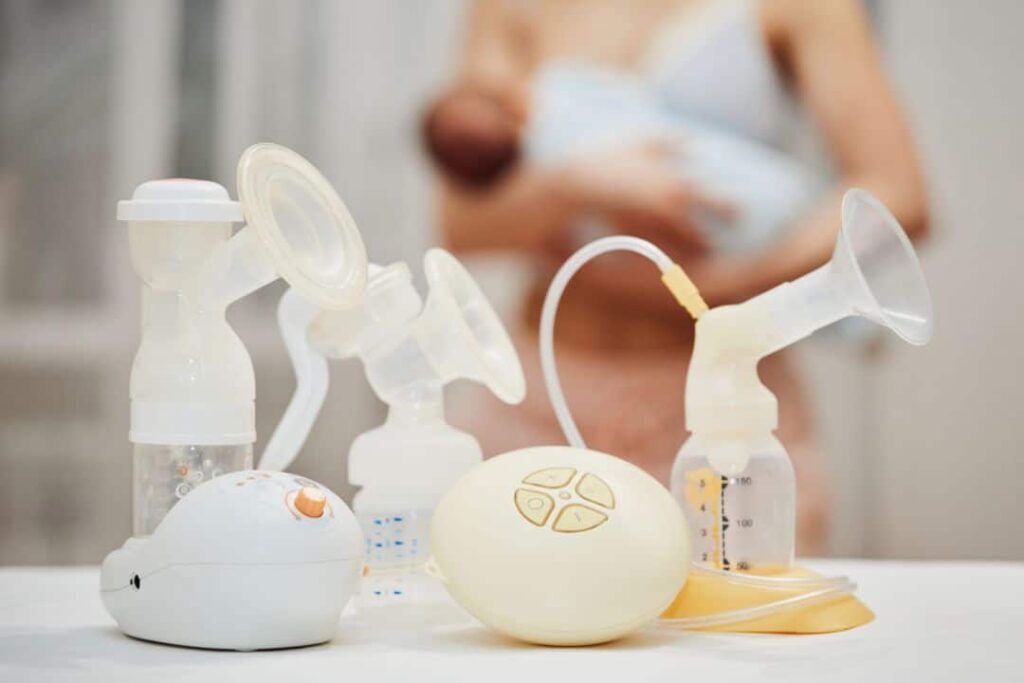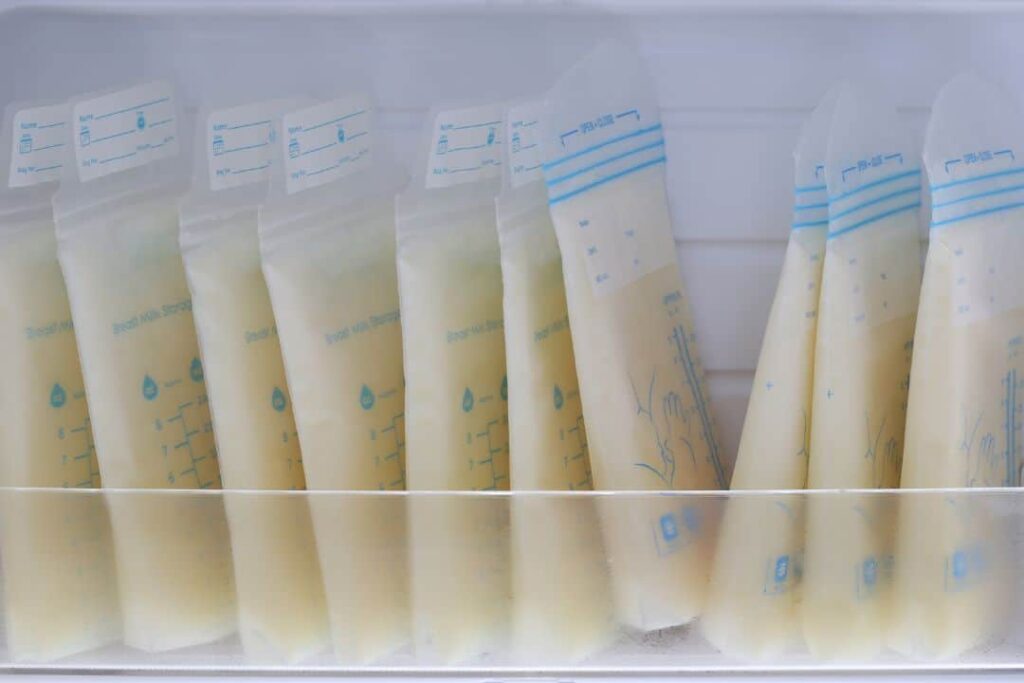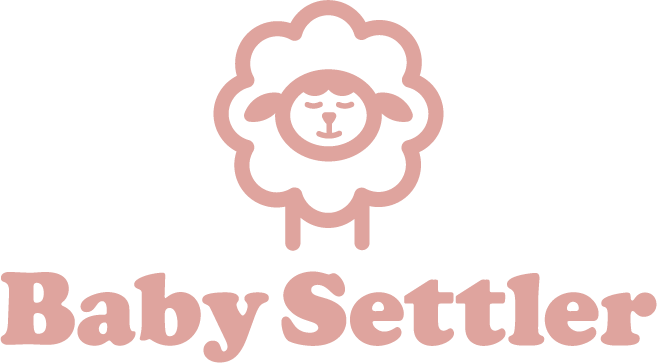
Pumping breast milk can open up a whole new world of opportunities for you, mama! There are so many great benefits to pumping, from relieving engorgement and increasing your breast milk supply to you no longer being the only person able to feed your baby.
Plus, pumping isn’t just exclusively for women who no longer want to breastfeed. Pumping and breastfeeding is a totally doable routine to fall into if you’re going back to work or just want a little more freedom and flexibility in your baby’s feeding schedule.
Here’s your pumping 101 guide, including everything you need to know about pumping on the go, pumping after drinking, and what needs to be included in your pumping bag.
Pumping To Relieve Engorgement
Breast engorgement happens when your breasts become full of milk to the point of discomfort and even pain. This happens to many women after giving birth when their bodies begin ramping up milk production, but engorgement is a possibility as long as you breastfeed.
“Engorged breasts feel like they’re ready to burst. They may feel hard like rocks and so tender that it hurts to walk or change your clothes. Your breasts will feel heavier, and simple things like snuggling your baby may be extremely painful,” explains Cleveland Clinic.
Engorgement can also happen if you skip nursing sessions or are producing more milk than you’re giving your baby (common when introducing formula or solids into your baby’s diet).
Pumping is a great way to relieve engorgement. Pump each breast until it feels completely empty before switching. If you’re breastfeeding and your baby hasn’t completely drained your breasts, pump the remaining milk.
Top Tip: Keep a compact, easily portable breast pump on hand with you at all times. If you’re out and about, you can quickly put this on to relieve swollen breasts. We at Baby Settler recommend this one.
Pumping At Work
It’s important to know your rights as a mother when you go back to work.
The Fair Labor Standards Act (FLSA) requires that employers provide basic accommodations for breastfeeding moms when they’re at work – this does not include a bathroom.
This place also needs to be shielded from view and free from intrusion. This applies both to hourly and salaried employees.
Check with your company’s HR department before you go back to work to make sure everything is in order and that they plan to provide you with a reasonable amount of time to pump. Also, check your specific state’s breastfeeding rights.
Your breastfeeding rights last for 12 months after giving birth.
Now that you know the law and have a safe space in which to pump at work, you’ve got to make sure you have everything you need for a comfortable experience.
Pumping Essentials
Include these essentials in your pumping bag:
Breast Pump
Of course, you’ll need a breast pump. The pump that’s right for you will depend on what stage of motherhood you’re in and your lifestyle. Milk production comes in phases, namely: Initiate, build, and maintain.
In the initiate phase – when you have a newborn baby who can’t feed from the breast directly – you may want to opt for a breast pump with rapid sucks and longer pauses. “Evidence suggests these infant sucking patterns stimulate a mother’s breasts for optimal milk,” says Medela.
The build phase refers to building your milk supply. During this phase, you’re getting the hang of breastfeeding and what to pump occasionally while your baby learns to latch effectively. It’s during this time that a lactation consult can be extremely beneficial.
Lastly, there is the maintain phase. During this time you want to maintain your milk supply while decreasing or stopping breastfeeding. As you’ll be pumping often, a lightweight portable breast pump is ideal. We also recommend opting for an electric pump as electric models can pump more milk than manual pumps in less time. This one is our favorite.
Milk Storage Bags
Once you’ve pumped, you need something to hold the milk. Milk storage bags are the best way to do this as they don’t take up as much space as Tupperware, and they’re made for the express purpose of storing breast milk.
Remember to write the date and time of pumping on the storage bag. Freshly expressed milk can be kept at room temperature for up to four hours and in the fridge for four days. You can also freeze your breast milk for six to 12 months. Once thawed, previously frozen breast milk can stay in the fridge for 24 hours, and never refreeze any leftover milk.
Get our free guide to breast milk storage here (plus, it includes a pumping log to keep track!).
Cooler Bag
If you’re not pumping at home, you’re going to need a cooler bag in which to transport the freshly pumped milk. Remember, fresh breast milk can only be out of the fridge for, at most, four hours. Breast milk stored in an insulated cooler with frozen ice packs can last for up to 24 hours.
Top Tip: When you’re out and about, still wear a nursing bra – they make pumping on the go way easier. We recommend this one because it’s super comfortable and allows for easy, pull-aside pumping access.
Nursing Pads
These are a must-have in your pumping bag. Just like between feedings, breast milk can leak out after pumping. Keep a few of these to slip between your bra and breast after you pump to absorb any excess milk that comes out.

Pumping After Drinking
Have you heard the term “pumping and dumping” before? It refers to expressing breast milk and then throwing it away, usually after drinking.
Pumping and dumping is not effective. If you have been drinking, any milk your body produces will have alcohol in it. Therefore, one pump session will not get rid of “tainted” milk. As the alcohol leaves your bloodstream, it will also leave your milk production. You may need to pump and dump your milk if you are becoming engorged, but there is still alcohol in your system.
Yes, mama, you can safely enjoy a glass of wine even if you are pumping. The CDC says, “Generally, moderate alcohol consumption by a breastfeeding mother (up to 1 standard drink per day) is not known to be harmful to the infant, especially if the mother waits at least 2 hours after a single drink before nursing.”
People often buy alcohol test strips for their breast milk, but it’s not necessary. If you had alcohol, it’s in your bloodstream (and milk) so it will show up as positive.
Pumping To Increase Supply
Pumping can also be a way to increase your supply of breast milk. Your body produces milk on a supply and demand basis – so, your breasts getting drained signals to your body that it needs to up the supply. Similarly, if your breasts do not get drained regularly, you’re telling your body to decrease the amount of milk being made.
If you want to continue feeding your child breast milk but decrease breastfeeding, you need to pump regularly. Every time you would’ve breastfed your baby, pump instead and store the milk.
One of my favorite pumping tips to increase the amount of milk your body is making is to put in a “milk order” or power pump. This means pumping straight after breastfeeding for 10 to 20 minutes. Power pumping after every feed for three days will help increase your supply.
Pumping is an amazing way to provide nourishment to your baby while also giving you more freedom and flexibility. It can be a challenging process at first, but the right equipment and support can make pumping way easier and more effective. Whether you’re returning to work, traveling, or just want to give your baby the benefits of breast milk, pumping is an excellent solution. Remember, don’t suffer in silence, mama! Reach out to lactation consultants or support groups if you need help along the way.




